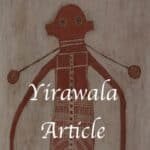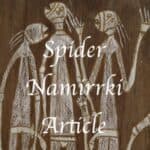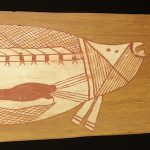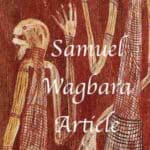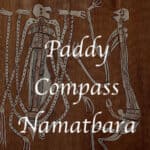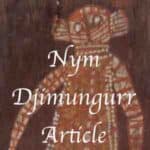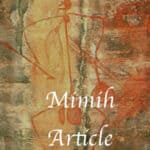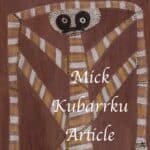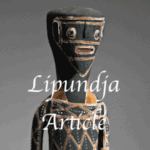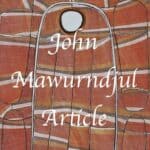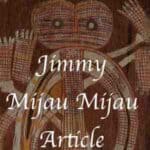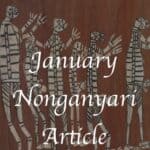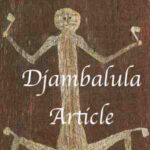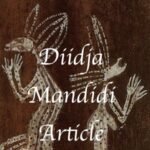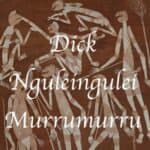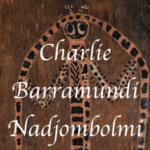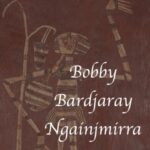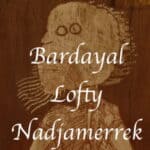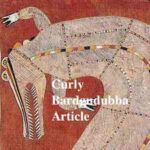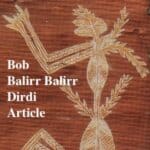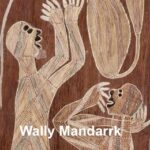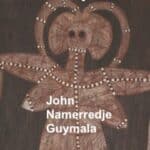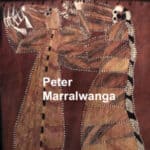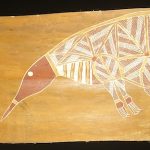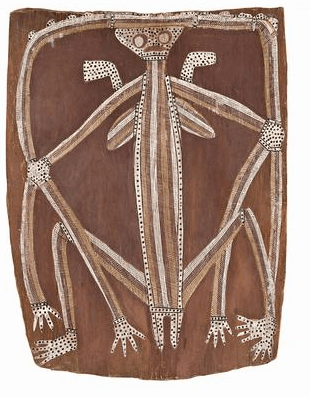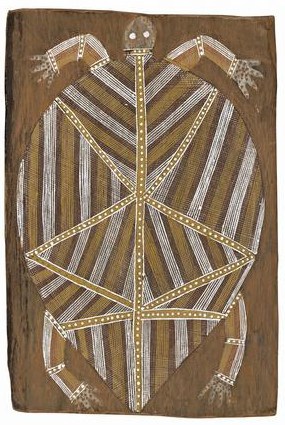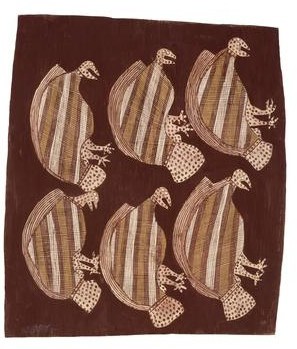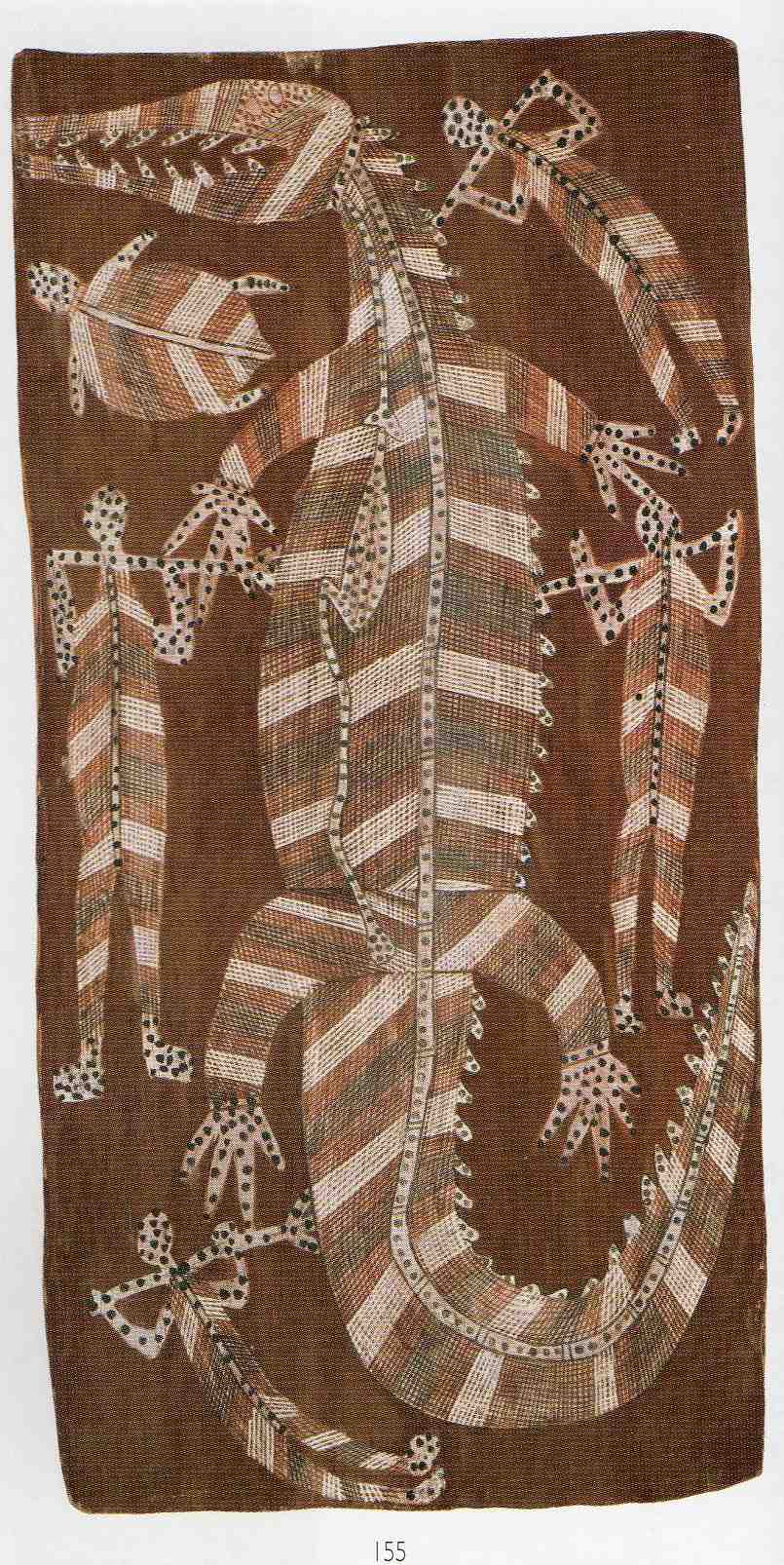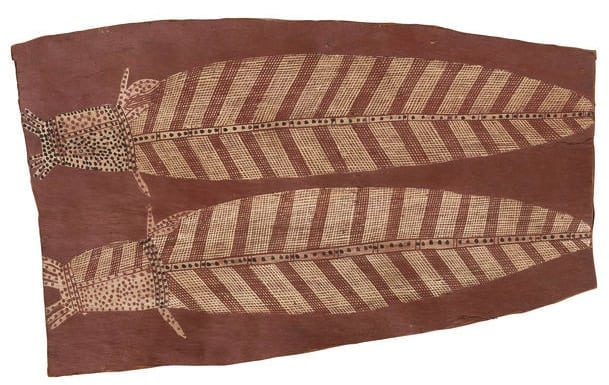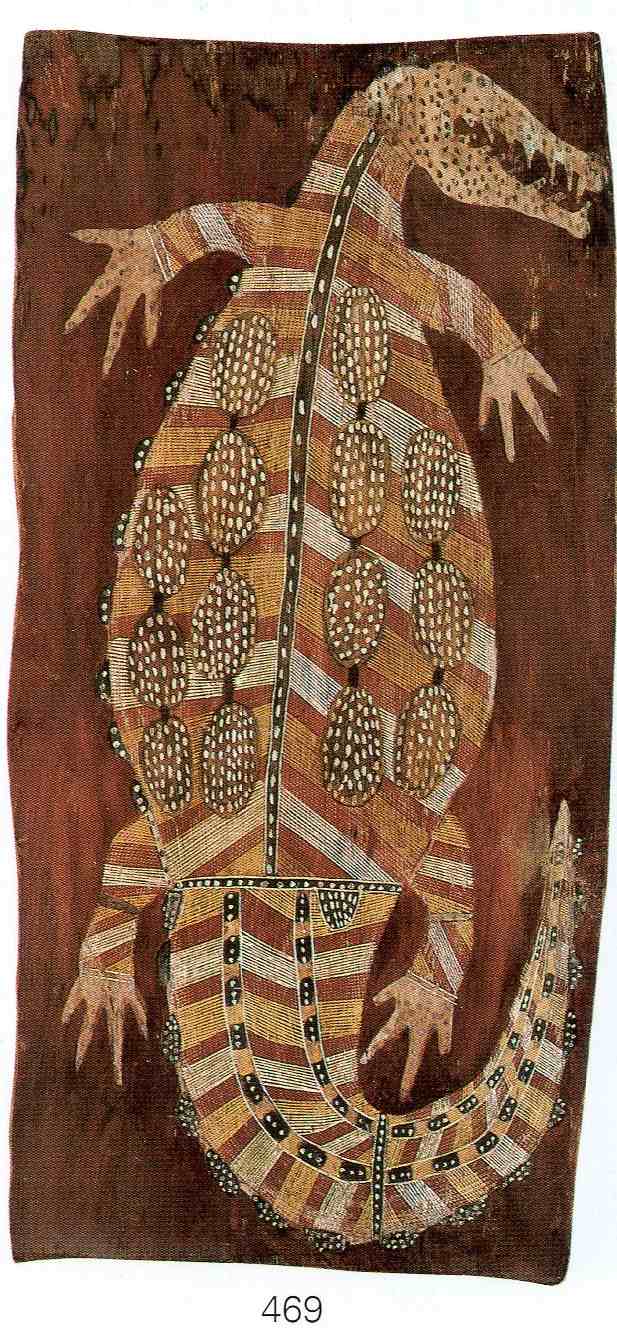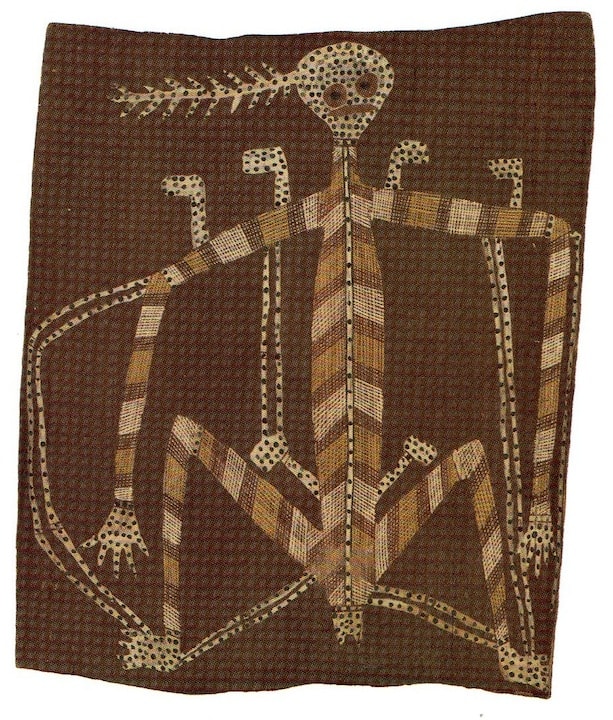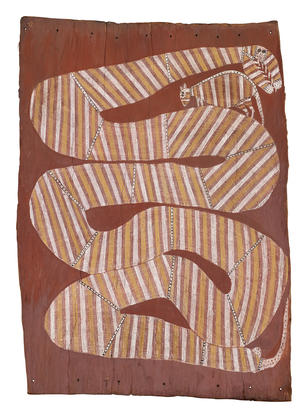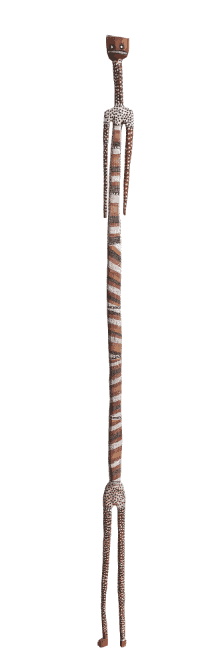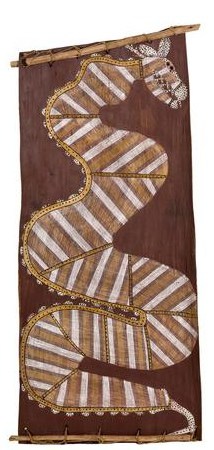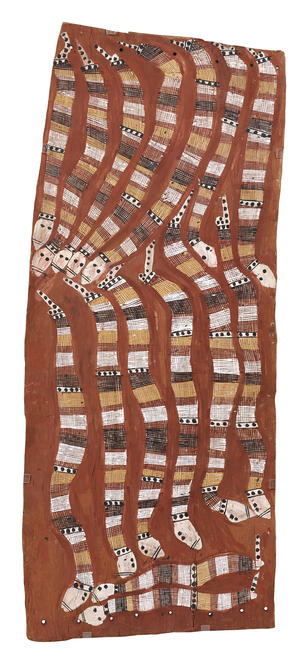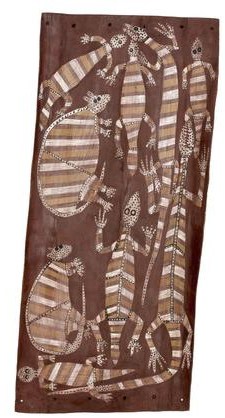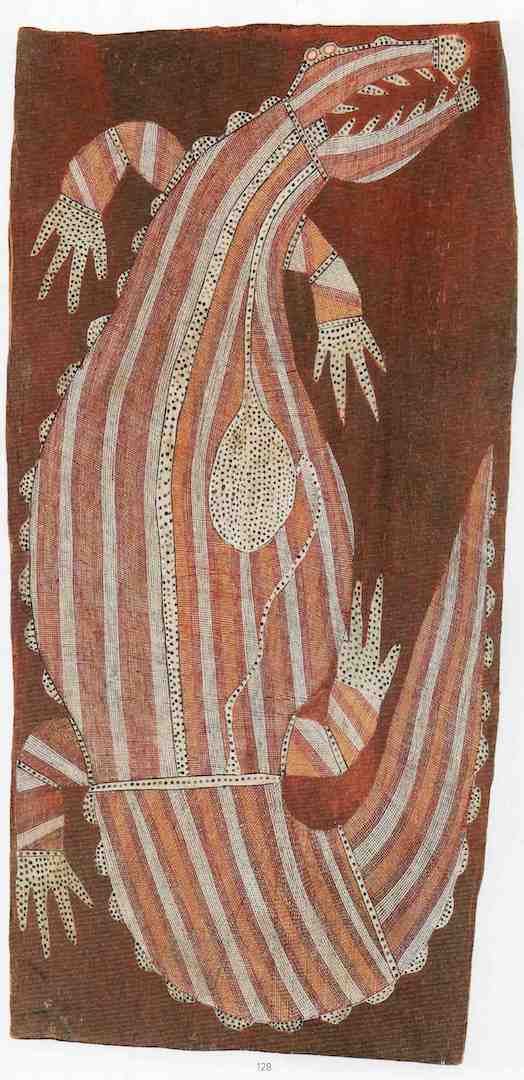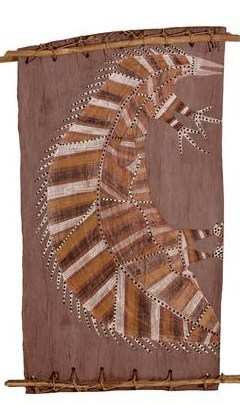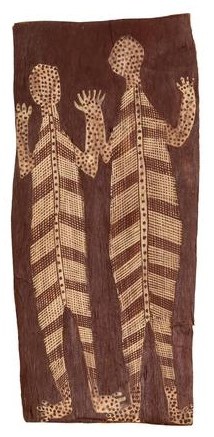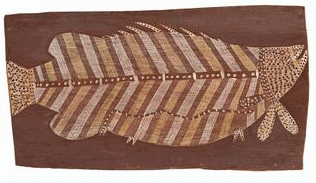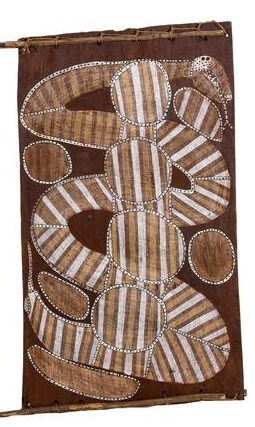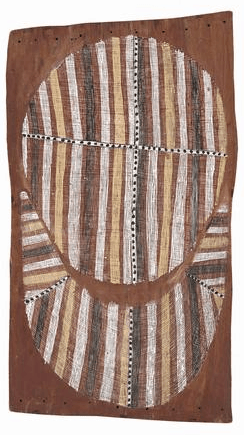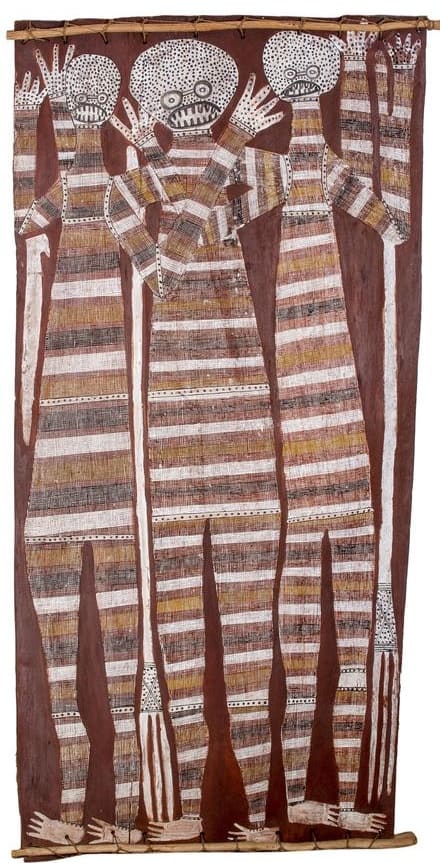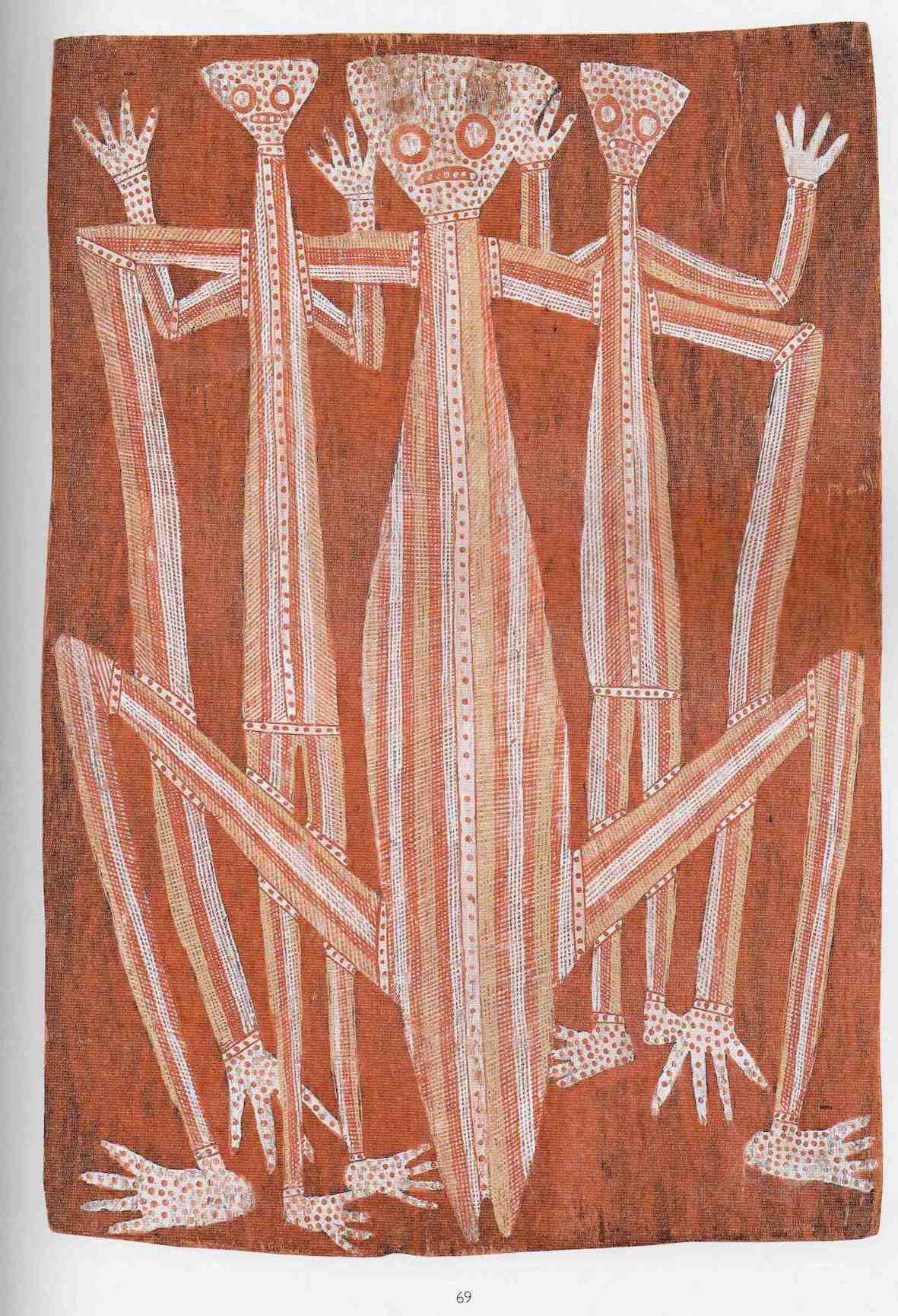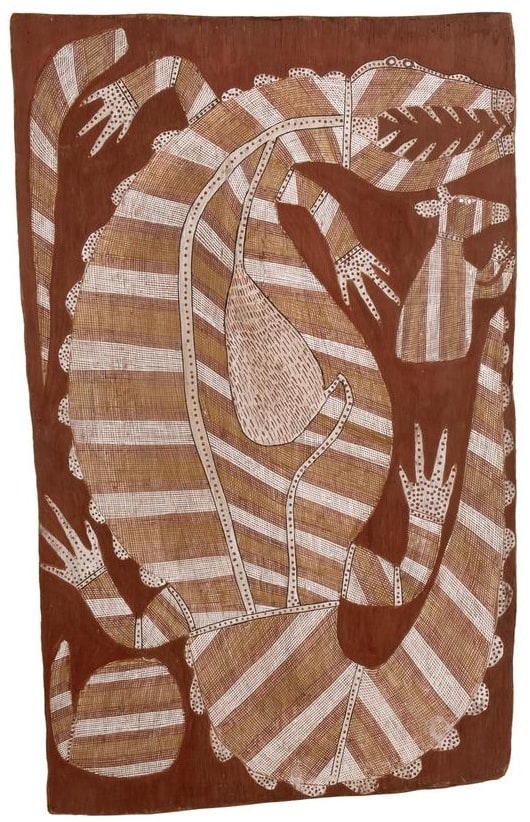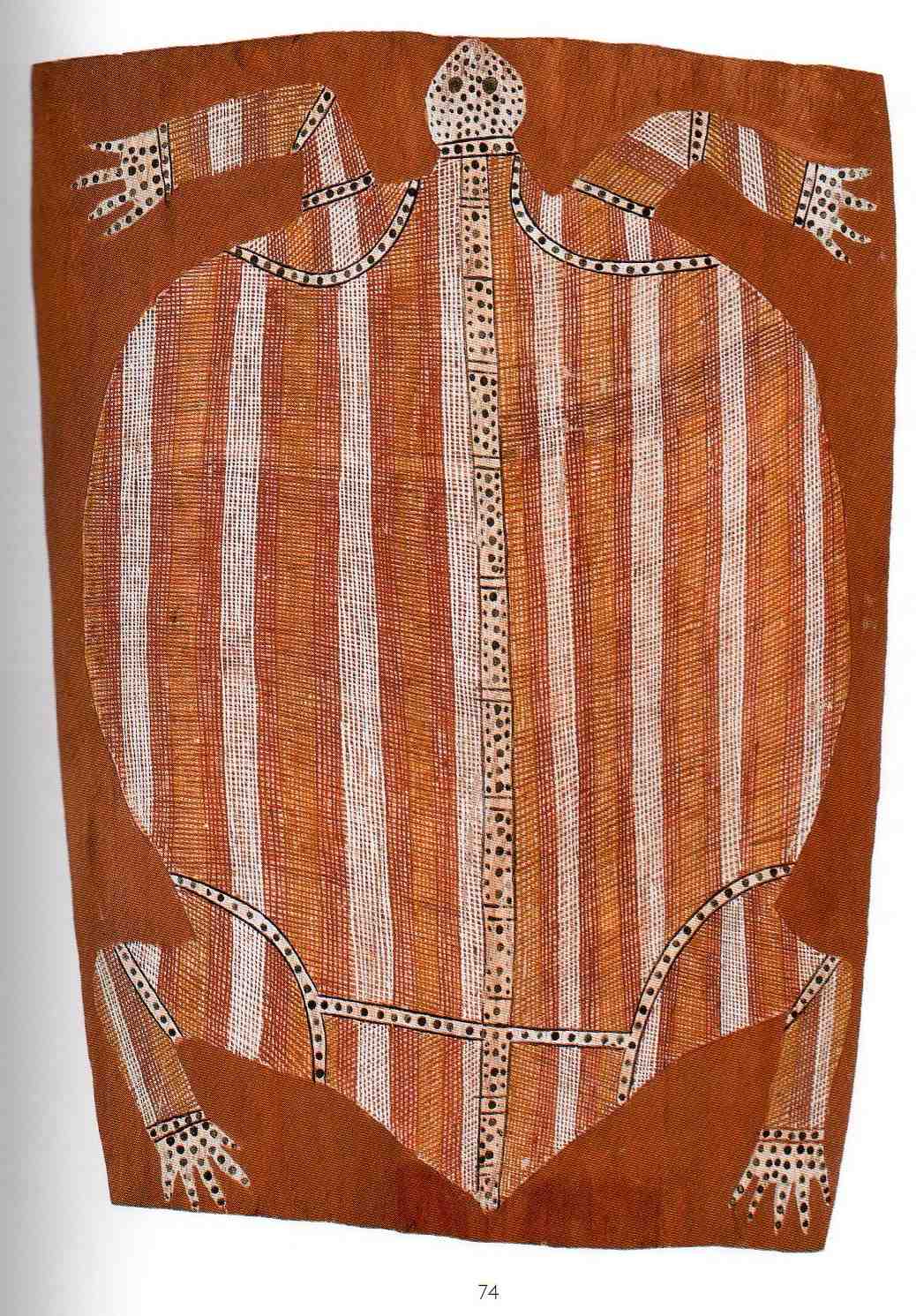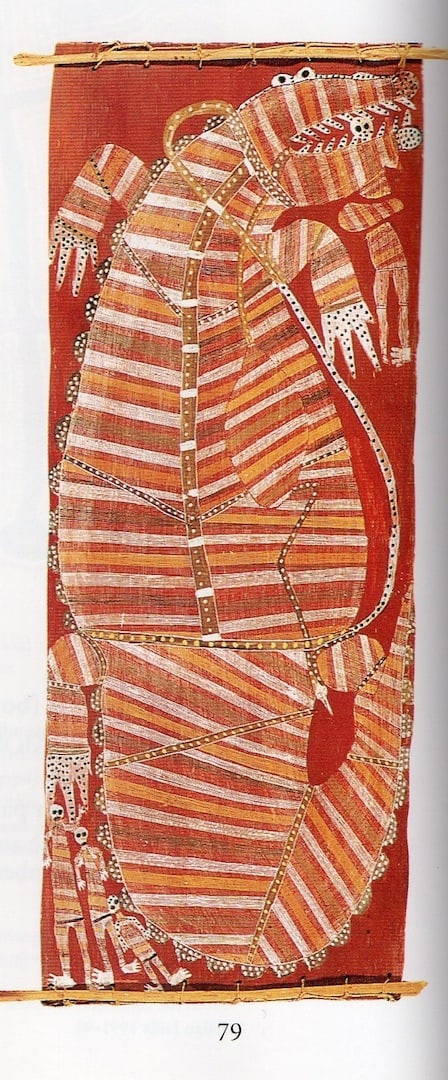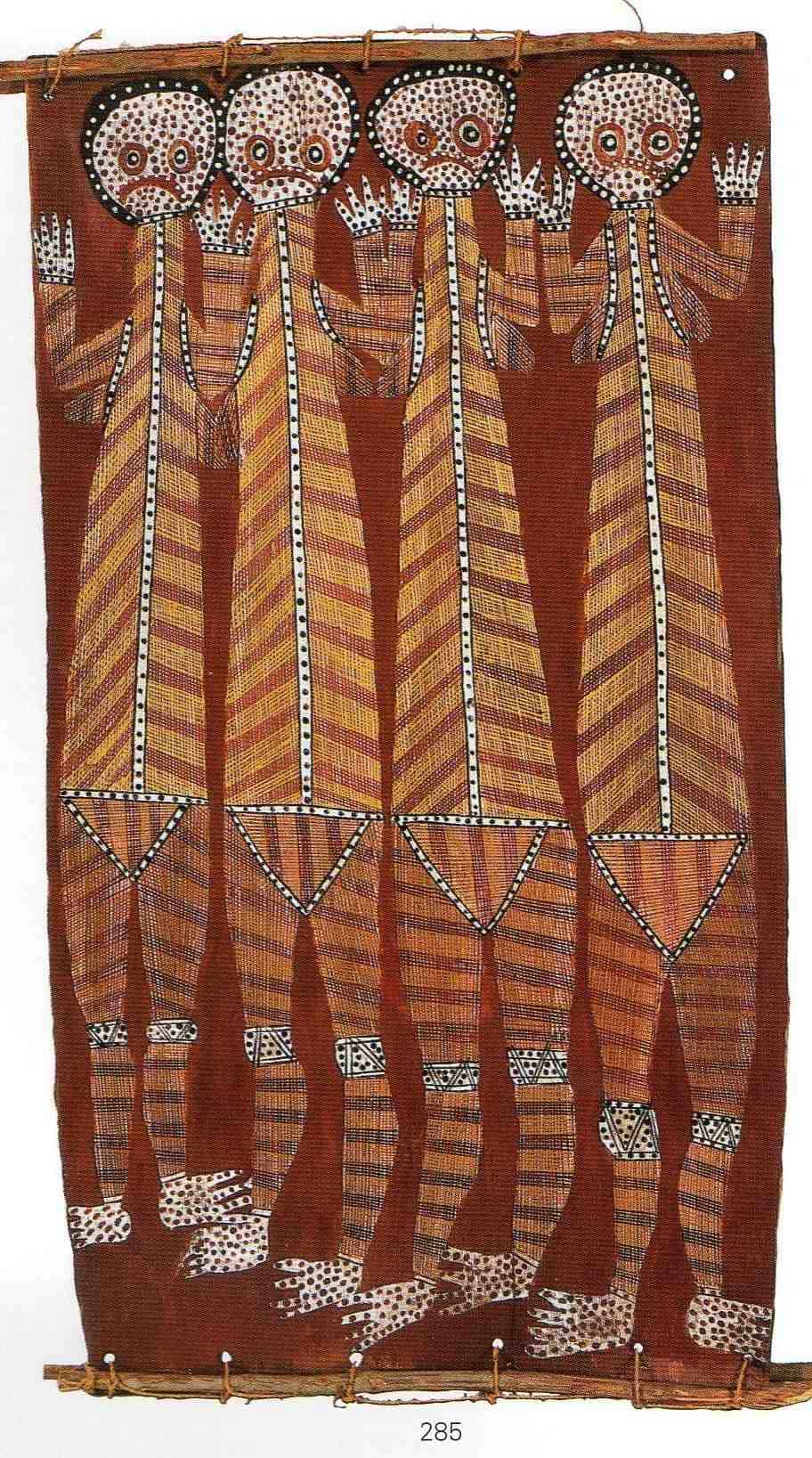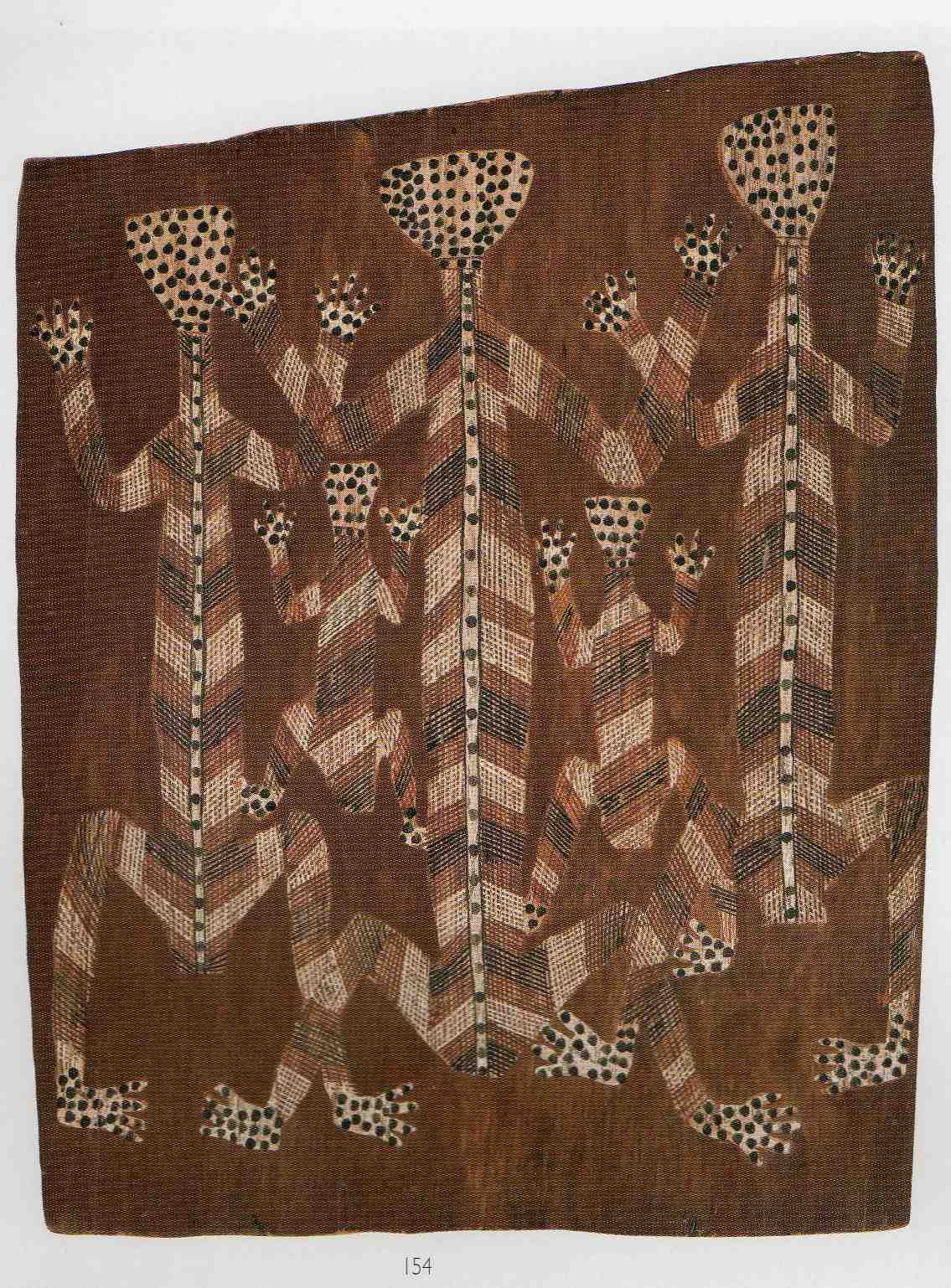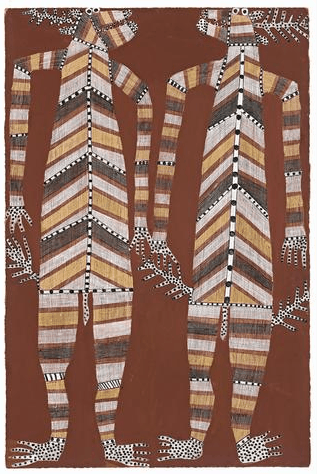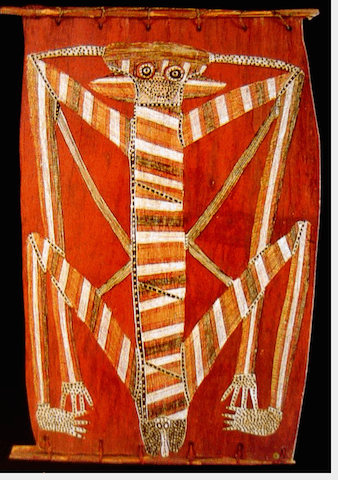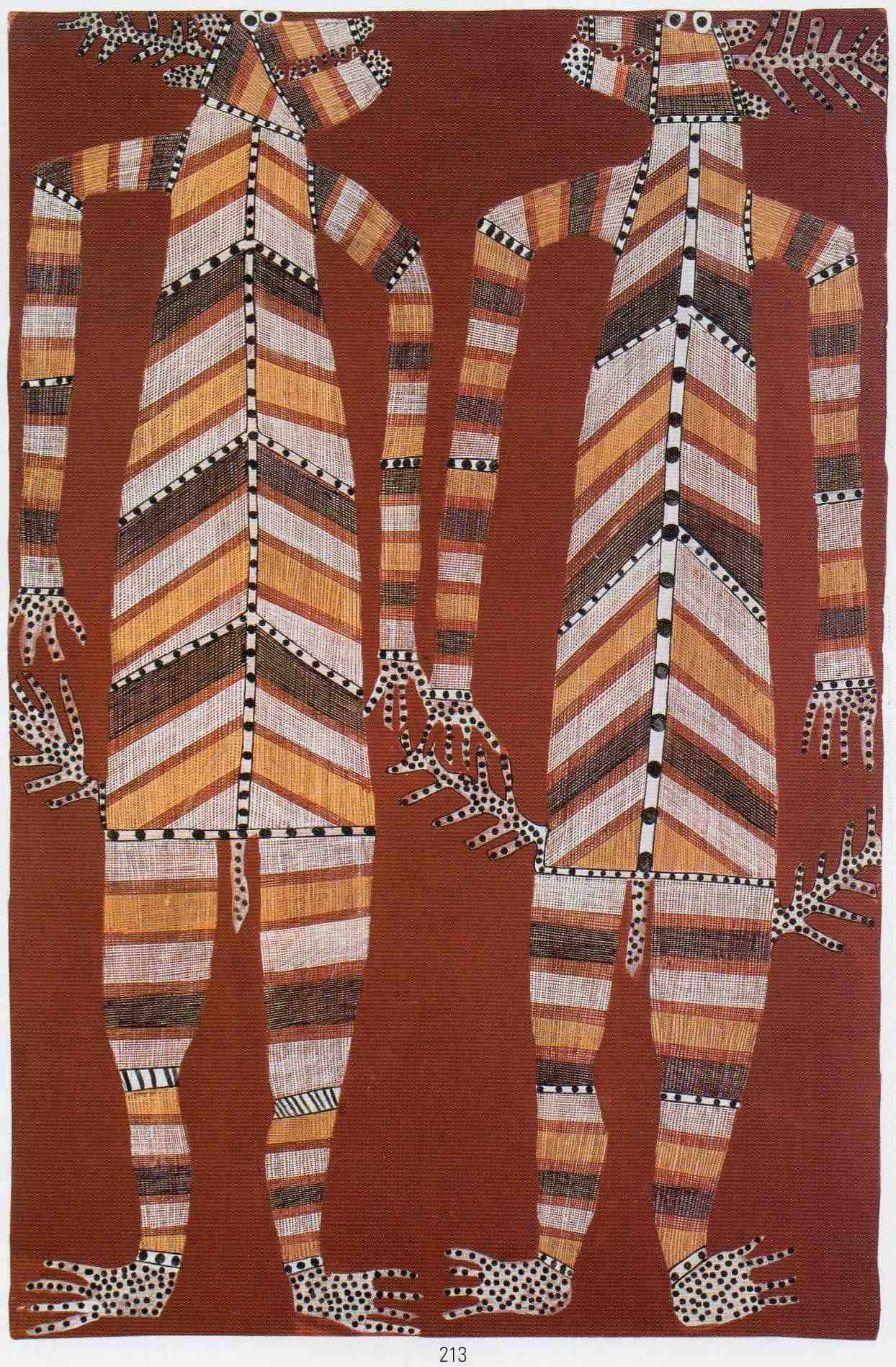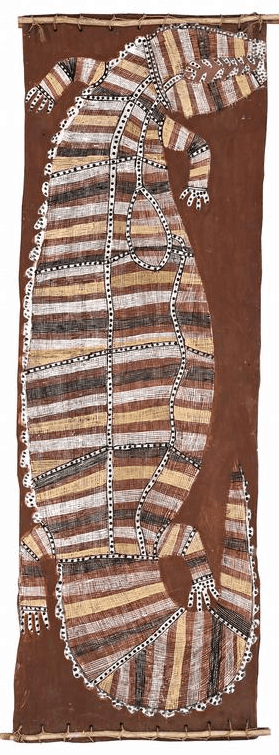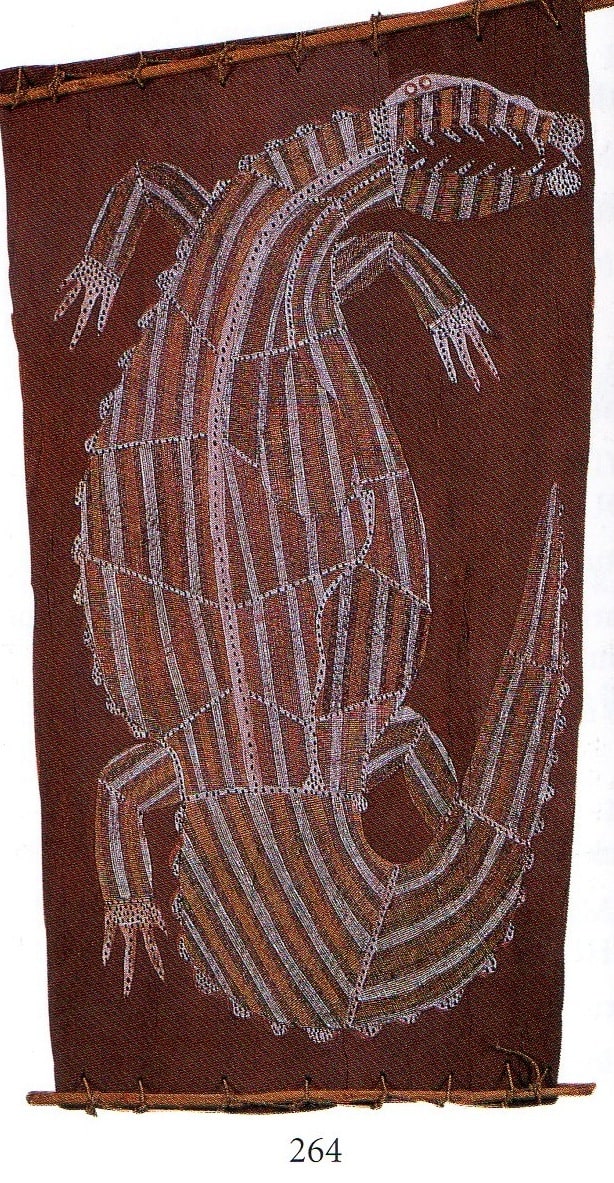Mick Gubargu Oenpelli Artist
Mick Gubargu learned to paint watching his father, Ngindjalakku paint Arnhem Land Rock Art. He later created several paintings for sacred Arnhem Land ceremonies on Rock shelters. Later he started selling bark paintings at Maningrida in the northern territory. The aim of this article is to assist readers in identifying if their bark painting is by Mick Gubargu by comparing examples of his work.
If you have a Mick Gubargu bark painting to sell please contact me. If you want to know what your bark painting is worth to me please feel free to send me a Jpeg. I would love to see it.
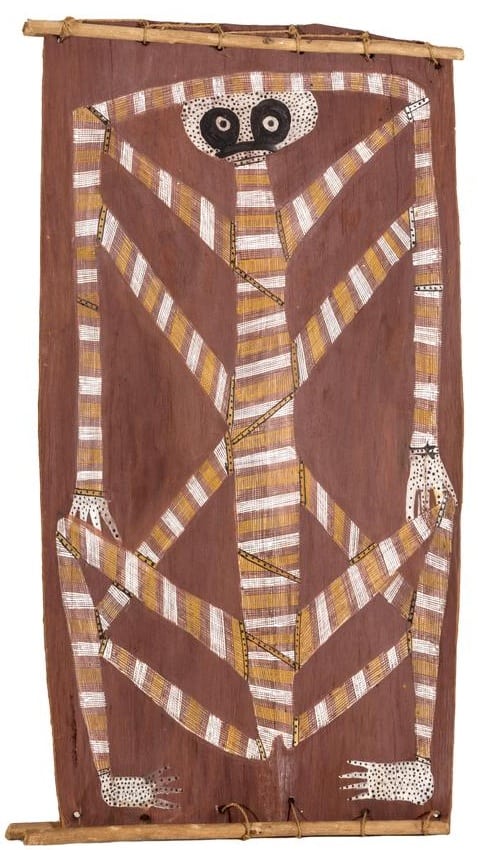
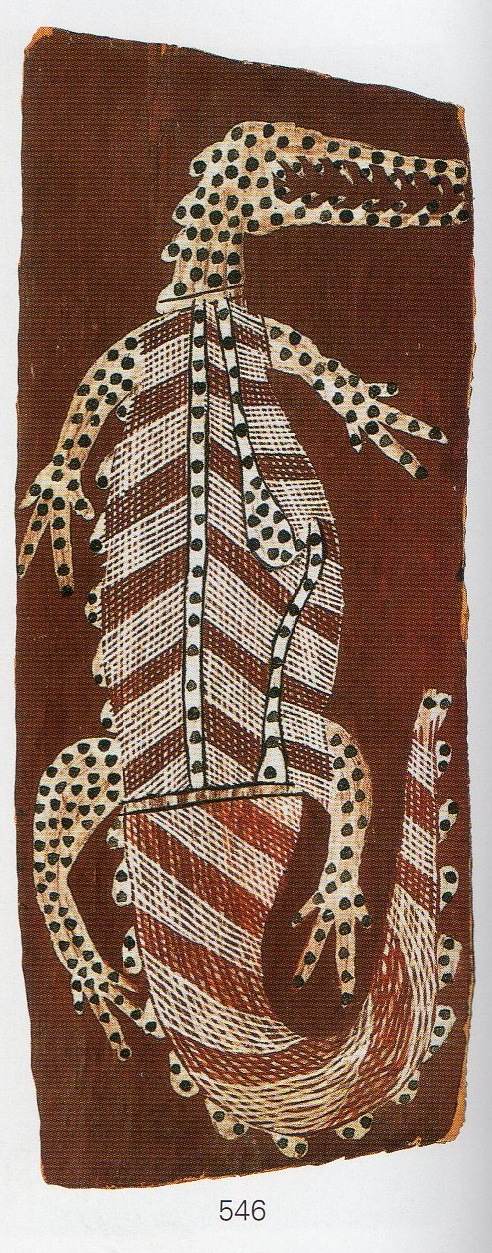
Style and Subject
His style is semi-traditional with many of his paintings similar to those found in rock shelters.
The main difference is that Gubargu used more crosshatching (Rarrk) than in earlier Oenpelli rock art. This is no doubt an influence from his time spent in Mandigrida where cross-hatching is popular. He produced figurative work, with a distinctive space around his depictions of spirits and totemic animals. Other distinctive features of many of his works include that his subjects have a white face covered with spots. The limbs of his spirit figures have non-wavy limbs with strong angled joints. He often omits eyes or other facial features.
Many of his later works on bark are very large some up to 1.3 meters long. He uses a combination of rarrk designs associated with the Mardayin ceremony and Oenpelli figures and spirits. Mick also did a few sculptures of mimih spirits and painted some hollow log bone receptacles.
Amongst his works were spirit beings from Arnhem Land. These include the Rainbow Serpent, the lightning spiritl Namarrkon and Kodjok Bamdjelk, the pandanus spirit. He also paints namorroddo, yawk yawk and mimih spirits. It is these paintings of spirits that are most popular with collectors.
He also painted fish, spirit kangaroo’s echidna and namanjwarre (crocodile) and lambalk (sugar glider).
Biography
Mick was born in 1924 at Kukabarnka in Arnhem Land in the Northern Territory Australia and was of the Kunwinjku people. He began painting at Oenpelli (northern Territory) shortly after the Second World War before moving to Maningrida in 1957. In Mandigrida he and David Milaybuma became the first regular commercial painters. His representations of malevolent spirit beings and ancestral figures resonate with power. They reflect a direct connection to the ancient tradition of Oenpelli painting on rock surfaces, a tradition that has since ceased.
It wasn’t until 1995, that Mick had his artistic vision recognized by the European world. His first exhibition called Rainbow, sugar bag, and moon was at the Museum and Art Gallery of the Northern Territory.
Mick was one of the last of a generation of Arnhem Land painters along with Lofty Nadjamerrek and Nguleingulei who could interpret images in Arnhem land rock art galleries.
References and Extra Reading
Keepers of the secrets: Aboriginal art from Arnhemland
Crossing Country: The Alchemy of Western Arnhemland art
All images in this article are for educational purposes only.
This site may contain copyrighted material the use of which was not specified by the copyright owner.
Western Arnhem land Artists and Artworks
Mick Gubargu bark painting Images
The following bark paintings are not a complete list of works but give a good feel for the variety and style of this artist

